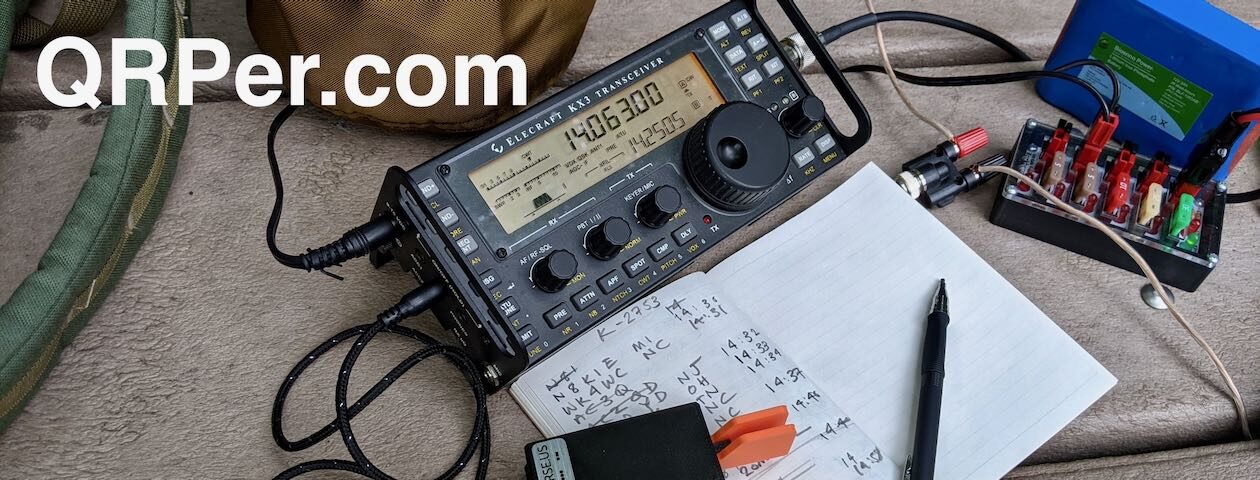Earlier this week, I mentioned that I purchased a Xiegu G106 in September. Its delivery was delayed because I had it shipped to my local post office, which, as you likely know, was flooded during Hurricane Helene.
With all the post-Helene chaos, I haven’t been able to do as much POTA as I’d like, so the G106 sat unopened in its box—until Wednesday, November 20, 2024, when I finally had a chance to take it out for its maiden activation at Lake James State Park (US-2739)!
Why the Xiegu G106?
 Last year, Radioddity sent me a G106 on loan, and I wrote an in-depth review after taking it on several activations. That review was lengthy because radios like the G106—designed as price leaders—often have compromises that may not suit everyone. It’s essential to judge such radios based on their goals, not by comparing them to premium models like the Icom IC-705.
Last year, Radioddity sent me a G106 on loan, and I wrote an in-depth review after taking it on several activations. That review was lengthy because radios like the G106—designed as price leaders—often have compromises that may not suit everyone. It’s essential to judge such radios based on their goals, not by comparing them to premium models like the Icom IC-705.
For the G106, the question I aimed to answer was: “Does this radio accomplish what it sets out to do?”
I believe its mission is to offer affordable field radio fun—capable of completing park or summit activations without excessive struggle, providing performance commensurate with its price point.
I decided to purchase the G106 because I had returned my loaner unit over a year ago, but questions about it kept coming from readers. Instead of requesting another loaner, I opted to buy one.
To my surprise, the pricing had dropped significantly. Here’s my order confirmation:
Interestingly, as I mentioned earlier this week, Amazon (at time of posting) has a Black Friday deal for the G106 (without accessories) $199 shipped for Prime members [QRPer affiliate link].
I’d have chosen that over the bundle I ordered had it been available at the time.
Unboxing to Activation

A common question from readers has been, “Would the Xiegu G106 work as a dedicated field radio for POTA activations?”

Most of these inquiries came from newcomers to ham radio, so I decided to test the radio in the field by setting it up from scratch—straight out of the box. This included attaching connectors to the power cord, configuring the radio, setting up the antenna, and hopping on the air.

I started the activation using SSB (voice) and later switched to CW (Morse Code) to give a full “out-of-the-box” experience.
The resulting activation video (below) is lengthy but was incredibly fun to film!
Gear:
 Note: All Amazon, CW Morse, ABR, Chelegance, eBay, and Radioddity links are affiliate links that support QRPer.com at no cost to you.
Note: All Amazon, CW Morse, ABR, Chelegance, eBay, and Radioddity links are affiliate links that support QRPer.com at no cost to you.
Radio
- Xiegu G106 via Radioddity (Save 5% off purchase amount when you shop with our affiliate link) and via Amazon.com
Antenna & Cable Assembly
- MW0SAW homebrew end-fed half-wave
- ABR Industries 25’ RG-316 cable assembly with three in-line ferrites (Use Coupon Code ABR10QRPER for 10% Discount!)
Throw Line
Pack
Logging Supplies
Key and Cable
- Key cable: Cable Matters 2-Pack Gold-Plated Retractable Aux Cable – 2.5 Feet
- K6ARK designed “Pico” paddle (thanks for building, Jonathan)
Battery and Power Distribution
Camera/Audio Gear
- DJI OSMO 4 action camera with Joby Telepod Sport Tripod
- DJI Wireless Microphones
Misc
On The Air
 This activation was nothing short of amazing.
This activation was nothing short of amazing.
 I began in SSB mode, using only the default mic settings. Despite operating at just 5 watts, I logged 21 hunters in 17 minutes—woo-hoo! While most signal reports were low, no one mentioned issues with my audio. I suspect results will improve once I fine-tune the mic gain settings. Continue reading Xiegu G106: From Unboxing to Your First POTA Activation (Beginner-Friendly Video!)
I began in SSB mode, using only the default mic settings. Despite operating at just 5 watts, I logged 21 hunters in 17 minutes—woo-hoo! While most signal reports were low, no one mentioned issues with my audio. I suspect results will improve once I fine-tune the mic gain settings. Continue reading Xiegu G106: From Unboxing to Your First POTA Activation (Beginner-Friendly Video!)




























































 It was so loud I actually had to wait for him to move on because I found myself shouting at the camera mic. Ha ha!
It was so loud I actually had to wait for him to move on because I found myself shouting at the camera mic. Ha ha!











